Fungus: Introduction
Fungus is a diverse group of organisms that belong to the kingdom Fungi. They play a crucial role in ecosystems as decomposers, symbionts, and pathogens. Fungi can be found in various habitats, including terrestrial and aquatic environments.
Characteristics of Fungi
Fungi are eukaryotic organisms, meaning their cells have a nucleus and other membrane-bound organelles. Some key characteristics of fungi include:
- Cell Wall: Fungi have cell walls composed of chitin, which provides structural support.
- Reproduction: Fungi can reproduce both sexually and asexually, often through the production of spores.
- Nutrition: Fungi are heterotrophic, meaning they obtain nutrients by absorbing organic material from their environment.
- Body Structure: Most fungi have a thread-like structure called hyphae, which forms a network known as mycelium.
Types of Fungi
There are various types of fungi, including:
- Yeast: Unicellular fungi that can reproduce asexually by budding.
- Mold: Multicellular fungi that often form fuzzy colonies and reproduce by producing spores.
- Mushrooms: The reproductive structures of certain fungi, typically found above ground.
- Lichens: Symbiotic associations between fungi and photosynthetic organisms such as algae or cyanobacteria.
Ecological Importance
Fungi play a vital role in the environment:
- Decomposition: Fungi are primary decomposers, breaking down organic matter and recycling nutrients in ecosystems.
- Symbiotic Relationships: Fungi form mutualistic associations with plants (mycorrhizae) and other organisms, contributing to nutrient uptake and overall ecosystem health.
- Economic Importance: Fungi are used in various industrial processes, food production, and the development of important medications such as antibiotics.
Fungal Diseases
Some fungi can cause diseases in plants, animals, and humans. Examples include:
- Athlete's Foot: A common fungal infection of the skin, often found between the toes.
- Candidiasis: An infection caused by the yeast Candida, which can affect the mouth, throat, and genital areas.
- Plant Pathogens: Fungi such as rusts and molds can cause diseases in crops, leading to significant agricultural losses.
Study Guide
To effectively study the topic of fungi, consider the following key points:
- Understand the characteristics of fungi, including their cell structure, reproductive strategies, and nutritional modes.
- Explore the ecological roles of fungi in decomposition, symbiotic relationships, and their economic importance.
- Learn about specific types of fungi, such as yeast, mold, mushrooms, and lichens, and their unique features.
- Examine the impact of fungal diseases on humans, animals, and plants, and the measures taken for prevention and treatment.
- Consider the applications of fungi in various industries and their potential for biotechnological advancements.
◂Biology Worksheets and Study Guides High School. Vertebrates I
Worksheet/Answer key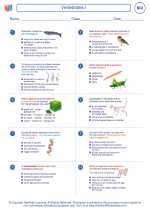 Vertebrates I
Vertebrates I  Worksheet/Answer key
Worksheet/Answer key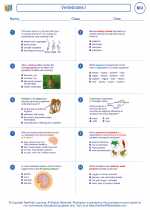 Vertebrates I
Vertebrates I  Worksheet/Answer key
Worksheet/Answer key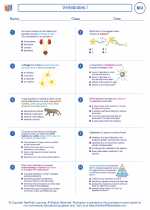 Vertebrates I
Vertebrates I  Vocabulary/Answer key
Vocabulary/Answer key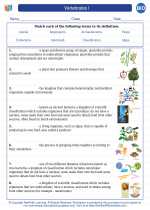 Vertebrates I
Vertebrates I  Vocabulary/Answer key
Vocabulary/Answer key Vertebrates I
Vertebrates I  Vocabulary/Answer key
Vocabulary/Answer key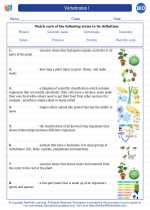 Vertebrates I
Vertebrates I 

 Worksheet/Answer key
Worksheet/Answer key
 Worksheet/Answer key
Worksheet/Answer key
 Vocabulary/Answer key
Vocabulary/Answer key
 Vocabulary/Answer key
Vocabulary/Answer key
 Vocabulary/Answer key
Vocabulary/Answer key

The resources above cover the following skills:
Concepts of Life Science (SC1, SC2, SC3)
The student demonstrates an understanding of the structure, function, behavior, development, life cycles, and diversity of living organisms by describing the structure-function relationship